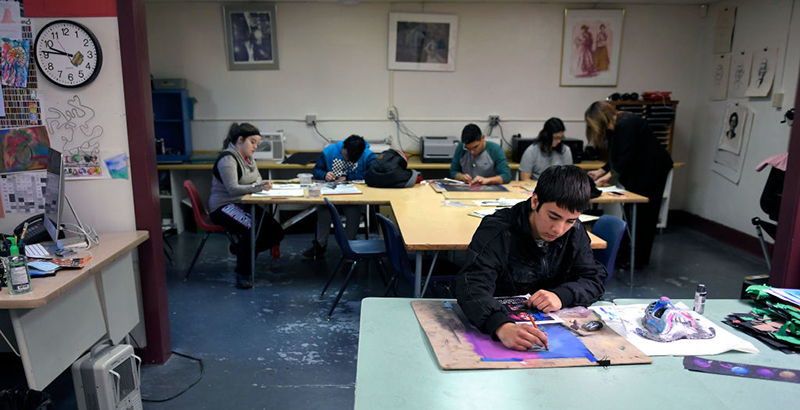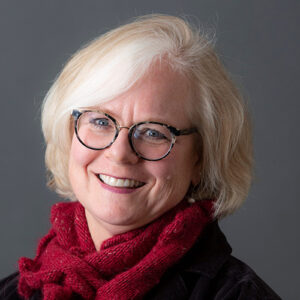O’Neill & Rhim: Stuck in the Virtual Basement? Schools Must Not Use COVID Safety Rules as a Reason to Exclude Special-Needs Kids

Get stories like this delivered straight to your inbox. Sign up for The 74 Newsletter
After more than a year of largely remote learning, many schools are, despite some lingering virtual offerings, returning to primarily in-person instruction for nearly all students. That is raising some very serious questions that we have never faced before: Do students with disabilities have a guaranteed right to be educated together with other children in person? Or can schools determine that, for health and safety reasons, some students with disabilities, who they characterize as at-risk or as presenting risks, be required to attend classes virtually? If we allow that, are students with disabilities now subject to a new kind of exclusion, a return to the bad old days when kids who receive special education services were sometimes relegated to the schoolhouse basement, out of sight and segregated? A virtual basement?
This novel situation pits two sets of rights against each other — health and safety on one side, special education on the other.
In the early weeks of COVID-19, as in-person learning was shutting down, state and federal authorities determined that individualized education programs did not need to be formally amended in order for students with disabilities to be switched to remote instruction. Did this set a precedent that in-person and remote learning are equally good? Or that moving students between these options is within a school’s discretion? Federal disability law has not changed: Students still have the right under the Individuals with Disabilities Education Act (IDEA) to be educated together with their non-disabled peers to the maximum extent appropriate (i.e., in the least restrictive environment appropriate for their needs).
But, what exactly does “together with” mean in light of new remote options? Students with disabilities also have the right under Section 504 of the Rehabilitation Act of 1973 to not be excluded from major life activities — such as learning — solely on the basis of disability when they are otherwise qualified to participate. Is in-person education a distinct “major life activity”? Are students who are perceived to present safety risks to the school community based on their needs “otherwise qualified” to attend school in person?
These questions are not purely hypothetical. A charter school network in New York City recently decided that a young student who has disabilities that make it hard for him to respect social distancing and keep a mask in place would not be allowed to return to in-person learning with other children. The boy and his family felt traumatized and excluded and filed a complaint alleging violation of their rights under IDEA. And, conversely, there are instances where families of students with disabilities want to keep their child in remote learning despite the school’s preference to have all students return in person. In Washington, D.C., three charter networks recently petitioned to be allowed to continue to offer a remote option, in part to address requests from parents who do not want to return to in-person learning. It is a request that will most likely resurface across the country this fall as states or districts move to require all schools to offer in-person instruction and in some instances, explicitly forbid remote instruction unless a school is one of the relatively few that was designed to be and functions as a wholly virtual entity.
With the resurgence of the virus, the Centers for Disease Control and Prevention recently revised its guidelines for schools, now calling for everyone to wear masks when classes resume this fall. That means kids with disabilities who may struggle with safety practices will continue to be at risk for exclusion.
Given these emerging tensions, leaders must anticipate and develop better strategies to address these difficult new challenges in a way that both protects students’ rights and respects important health and safety concerns. For example:
The U.S. Department of Education should:
- Issue guidance as to how, in districts that plan to continue to offer both remote and in-person learning, schools will comply with IDEA, ensure parents’ voices are heard and abide by requirements around the “least restrictive environment” for students who attend school remotely.
State education agencies should:
- Promulgate guidance in light of the state’s approach to continued remote and hybrid learning, including emphasizing the importance of parental involvement in placement decisions and requiring districts to specify how they plan to provide meaningful inclusion for students in remote and hybrid learning;
- Ensure that districts are not inappropriately expanding at-home instruction to keep students who may present health challenges away from in-person school, in more restrictive environments than warranted; and
- Track where students receive instruction and how they are progressing, including data disaggregated by disability category.
Local school districts should:
- Ensure that planning and decisions related to in-person and remote instruction consider the fundamental rights of students with disabilities and reflect best instructional practices;
- Train individuals who participate in individualized education program team meetings to ensure that decisions related to whether students with disabilities will attend school in person or remotely focus on providing a free and appropriate public education in the least restrictive environment;
- Implement robust plans to meaningfully engage families to maximize the effectiveness of remote learning plans; and
- Collect statistics on the number of students in remote learning, including disaggregated data regarding students with disabilities, such as information about categories of disability, academic progress or loss of learning by children in remote settings.
These issues are going to arise in districts across the country. We strongly urge education leaders to take these actions now, to prevent further marginalizing the education of students with disabilities as the nation emerges from the worst of the pandemic.
Paul O’Neill and Lauren Morando Rhim are co-founders of the Center for Learner Equity.
Get stories like these delivered straight to your inbox. Sign up for The 74 Newsletter

;)
